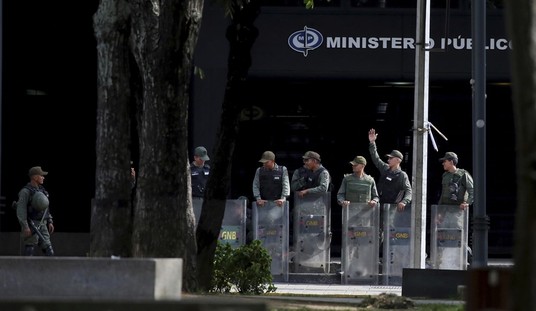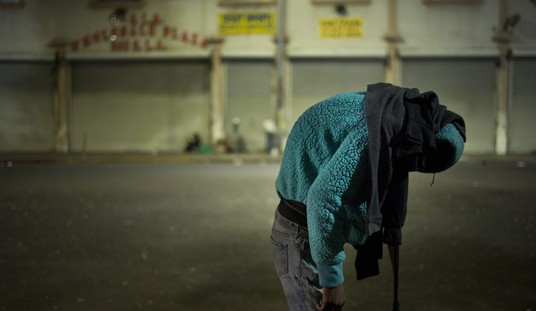Pictures of Tacloban clearly show what sustained 200 mph winds can do. It can toss shipping containers around like matchboxes, flip cars, level cinder block houses and uproot any tree short of a coconut palm. What it can’t do is knock down reinforced concrete structures or structures that have a small sail area.
A friend who wrote on my Facebook page noted that the damage in Tacloban resembled pictures of the destruction during the war. And in that resemblance lies a tale. We no longer fear air raids. Now, when natural disasters threaten, evacuees are often concentrated in gymnsiums or similar strucures for safety. But those structures can be menaced by high winds or forces which resemble those generated by weapons.
During the eruption of Mount Pinatubo, 42 buildings collapsed in Clark Air Force Base. A nine year old girl was killed by a beam when the roof fell through in gymnasium she was sheltering in. Roofs with a large area can be vulnerable.
And if there’s any place on earth that disaster visits regularly, it’s the Philippines. It has earthquakes (an intensity 8 hit the same region the typhoon struck); volcanoes and 11 typhoons on average a year, not to mention shipwrecks, insurgencies, terror attacks and assorted other nuisances. Any improvement in civil defense technology would see a lot of use.
The Tacloban pictures suggest that a six foot deep foxhole would have been a pretty good defense against the high winds precisely because flush structures allow overpressures to pass over them. The difference of course, is that typhoons threaten excavated protections with flooding. Digging foxholes might save you from the winds only to drown you later.
Nevertheless, the similarity between the threats posed by high winds and high explosive blasts suggests that emergency planners should revisit the civil defense structures designed for the Second World War because the designers faced problems similar to those posed by high winds.
One interesting but now forgotten British design resembled a quonset hut built in reinforced concrete. A closer look shows that the design consists of prefabricated concrete sections that join up at the top. The halves slot into a concrete channel which comprises the base.
It is called the Stanton Shelter, after the Stanton Ironworks where it was manufactured. “They could be built in any length but usually consisted of 18 precast concrete arched-shaped units (each one in two parts), bolted together to form a standard (after 1941) Air Ministry shelter for 50 men. The entrance can be a brick-lined with concrete steps (where required) and the rear unit has an emergency escape hatch. They are often above ground or semi-sunk but for concealment purposes there is a layer of earth and turf.”
A battlefield archaeologist who actually went out and measured one finds that
Floor to apex of the internal surface is 7 feet exactly. Width-7 foot 5½ inches. Made up from 18 sections bolted together, with an end cap and a door end to form a length of 30 foot 4 inches. The door has an entry access of 75 inches with a door width of 22 inches.Doorway edge is thickened to four inches to provide additional support. The two sections at the door end each have half of the escape hatch formed within the top. the hatch dimensions are 31X31 inches with an internal dimension of 24½ inches. There is a half inch wide internal lip to provide a seat for the escape hatch cover. A raising piece sat on the hatch to bring the exit up by 14 inches to allow for the soil covering. The actual thickness of each section is 2 inches. Each section has a formed rib of 2 inches wide that make up a rib of 4 inches thick. These ribs are bolted together every 22 inches. The outside top ridge is four inches high.
Construction crews that dismantled a derelect Stanton and found it weighed 20 tons. But in this age of cranes and backhoes that does not seem to be an insurmountable problem.
The Stantons are an interesting example of forgotten technology that may find uses today. In 1932 Stanley Baldwin said “the bomber will always get through”. Maybe we no longer worry about bombers, but it is probably still correct to say: the typhoon will always get through.
Having said that, one can turn to what constitutes the real civil defense infrastructure of the Philippines. It is the social network a defense mechanism that arose over the centuries in the face of constant threats; poverty, civil unrest, volcanos, earthquakes, storms and the odd world war.
Giant volcanos, supertyphoons, earthquakes at 8 on the Richter every decade or so have engendered a dense human framework that is almost feudal. Each inhabitant has someone to run to in the social ladder above and people who depend on him from below. And for redundancy the relationships form a matrix. People have multiple family-type relationships, multiple sets of friends and belong to bewilderment of informal groupings.
This crazy social fabric has actually been supercharged by the Internet. Wikipedia says 83% of the Philippine population belongs to one Internet social networking platform or the other. In addition to “friends” you have “Facebook friends”.
A study released by Universal McCann entitled “Power To The People – Wave3” declared the Philippines as “the social networking capital of the world,” with 83 percent of Filipinos surveyed are members of a social network. They are also regarded as the top photo uploaders and web video viewers, while they are second when it comes to the number of blog readers and video uploaders.
There’s an apocryphal story told about a rescue team happening upon the skeleton of a Filipino in front of a table laden with food. The corpse apparently died of starvation to the bewilderment of the European rescuers. One of the rescuers, a Filipino, explained what happened. “He died of starvation because he had no friends to share the meal with and couldn’t eat from loneliness.”
In comparison to Filipino social networks the equivalent structures in many Western countries seem distinctly weak, as if a tradeoff had been made betwen the physical infrastructure and the social; where the poor live in housing projects far better than Filipino slums but where the nuclear family has been driven to extinction and the only friend anyone has left is their EBT card; where government is all the kin you have.
James Taranto described the ideal modern vision of the ideal Western woman in his piece The Lonely Life of Julia. “In Obama’s ideal world, men are replaced by bureaucrats.” ‘Julia’ is a fictional character that was created by the Obama campaign to depict an ideal life.
The most shocking bit of the Obama story is that Julia apparently never marries. She simply “decides” to have a baby, and Obama uses other people’s money to help her take care of it. … In due course she bears a son named Zachary, the only other character in the tale.
But it’s a choice. Julia will do alright as long as the government keeps paying out. But one wonders what happens if the music stops: should Julia’s apartment get totaled by an earthquake or if there’s civil unrest or she’s de-housed by a 200 mile an hour hurricane, then what? Social networks of the old fashioned kind were once prevalent in America and in Europe. Maybe they have their uses still, along with the Stanton shelters.
Update: People have asked how to donate money to the typhoon victims. Here’s a link to Caritas Manila, which is basically the relief agency of the Catholic Church. There’s also the local Red Cross, which takes Paypal in addition to credit cards.
Did you know that you can purchase some of these books and pamphlets by Richard Fernandez and share them with you friends? They will receive a link in their email and it will automatically give them access to a Kindle reader on their smartphone, computer or even as a web-readable document.
The War of the Words for $3.99, Understanding the crisis of the early 21st century in terms of information corruption in the financial, security and political spheres
Rebranding Christianity for $3.99, or why the truth shall make you free
The Three Conjectures at Amazon Kindle for $1.99, reflections on terrorism and the nuclear age
Storming the Castle at Amazon Kindle for $3.99, why government should get small
No Way In at Amazon Kindle $8.95, print $9.99. Fiction. A flight into peril, flashbacks to underground action.
Storm Over the South China Sea $0.99, how China is restarting history in the Pacific













Join the conversation as a VIP Member